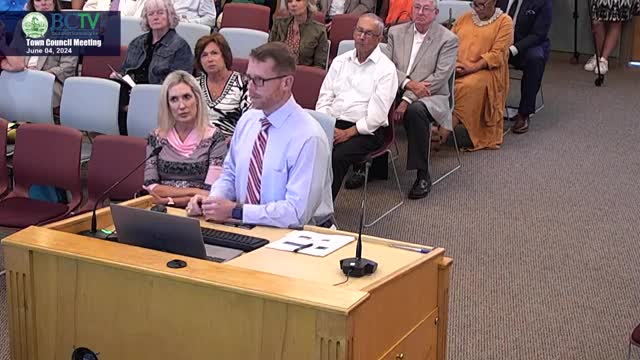New traffic system promises smoother flow and safety
June 05, 2024 | Hilton Head Island, Beaufort County, South Carolina

This article was created by AI summarizing key points discussed. AI makes mistakes, so for full details and context, please refer to the video of the full meeting. Please report any errors so we can fix them. Report an error »

In a recent government meeting, officials discussed the current state of air travel and traffic management systems, highlighting both stability in air traffic and advancements in adaptive traffic signal technology.
Air travel remains steady across major cities, with only a notable drop in traffic reported in Dallas. Cities like Boston, Philadelphia, Washington, and New York continue to experience robust activity, with weekend departures averaging around 13 to 14 flights daily. Comparatively, Charlotte sees departures every few minutes, underscoring the relative busyness of different airports.
Officials emphasized the need for more comprehensive data on air traffic, including inbound and outbound statistics for both commercial and general aviation. This data is expected to inform future decisions and improvements in airport services.
The meeting also featured an update on the adaptive traffic signal management system, which aims to enhance traffic flow and safety. The system, which has been implemented with a $3.1 million budget funded through impact fees, includes 25 new traffic signal controllers and 96 radar units, significantly increasing detection capabilities from 200 to over 2,250 areas. This technology allows for real-time adjustments to signal timing based on actual traffic conditions, improving the efficiency of mainline traffic while also addressing pedestrian safety with new ADA-compliant stations.
Despite these advancements, officials acknowledged ongoing challenges, particularly with the reliability of detection systems during electrical storms. They are collaborating with an independent engineering firm to optimize performance and are committed to continuous updates and improvements.
The meeting concluded with discussions on the importance of public awareness regarding traffic signal operations and the need for better communication channels for residents to voice concerns. Officials are exploring ways to enhance transparency and responsiveness to community inquiries, particularly regarding traffic flow at busy intersections.
Overall, the meeting underscored a commitment to improving both air travel and traffic management systems, with a focus on data-driven decision-making and community engagement.
Air travel remains steady across major cities, with only a notable drop in traffic reported in Dallas. Cities like Boston, Philadelphia, Washington, and New York continue to experience robust activity, with weekend departures averaging around 13 to 14 flights daily. Comparatively, Charlotte sees departures every few minutes, underscoring the relative busyness of different airports.
Officials emphasized the need for more comprehensive data on air traffic, including inbound and outbound statistics for both commercial and general aviation. This data is expected to inform future decisions and improvements in airport services.
The meeting also featured an update on the adaptive traffic signal management system, which aims to enhance traffic flow and safety. The system, which has been implemented with a $3.1 million budget funded through impact fees, includes 25 new traffic signal controllers and 96 radar units, significantly increasing detection capabilities from 200 to over 2,250 areas. This technology allows for real-time adjustments to signal timing based on actual traffic conditions, improving the efficiency of mainline traffic while also addressing pedestrian safety with new ADA-compliant stations.
Despite these advancements, officials acknowledged ongoing challenges, particularly with the reliability of detection systems during electrical storms. They are collaborating with an independent engineering firm to optimize performance and are committed to continuous updates and improvements.
The meeting concluded with discussions on the importance of public awareness regarding traffic signal operations and the need for better communication channels for residents to voice concerns. Officials are exploring ways to enhance transparency and responsiveness to community inquiries, particularly regarding traffic flow at busy intersections.
Overall, the meeting underscored a commitment to improving both air travel and traffic management systems, with a focus on data-driven decision-making and community engagement.
View full meeting
This article is based on a recent meeting—watch the full video and explore the complete transcript for deeper insights into the discussion.
View full meeting